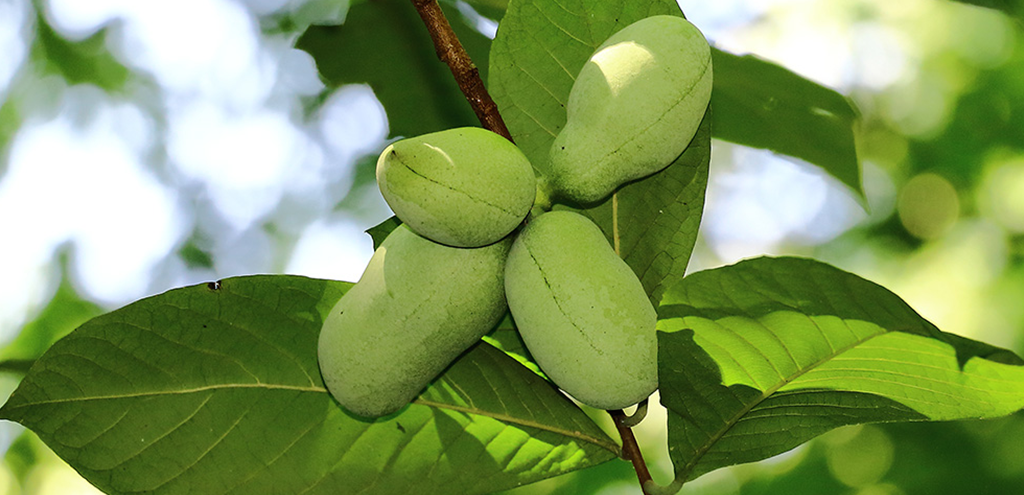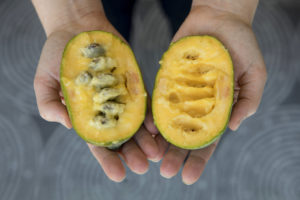THE LEAFLET

Pawpaws Have Arrived. How to Spot One Near You!
Pawpaws, for the unfamiliar, are a delicacy that taste like a cross between a banana and a mango and they grow locally.

The inside of a pawpaw is soft and gooey. Tyrone Turner/WAMU
While the ongoing pandemic prevents us from doing in-person stuff like our annual Pawpaw Party or our experiments making pawpaw mead, the pawpaw trees are still producing delectable fruits for folks to enjoy. You probably won’t find one in stores, but you may find a tree near you!
A friendly reminder, please do not forage for fruit on private property and never eat anything that you are not 100% able to identify. Better to be safe than sorry!
For the botanists and tree geeks out there, the Pawpaw offers more than just a delicious fruit to whet our appetite with. It is truly a botanical anomaly. The family of plants Pawpaw resides in, Annonaceae, is distinctly tropical and our tree is the only species native to temperate North America. It is the United States’ largest native edible fruit and was once highly valued by Native Americans. European settlers too were enamored with the Pawpaw, but somewhere around the turn of the 1900’s, a rapidly urbanizing American public had all but forgotten this fruit. However, the past few decades have seen a concerted effort to realize the Pawpaw’s agricultural and horticultural potential. A native, large, delicious fruit with very few pests that can even fruit in the shade: who wouldn’t at least give it a try?
For the homeowners, it maxes out at 25 feet in full sun and could fit in many yards and landscapes across the city!